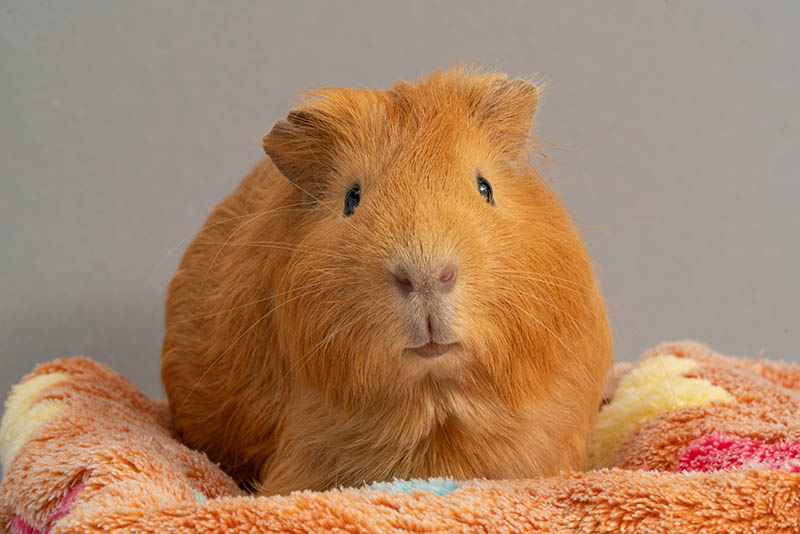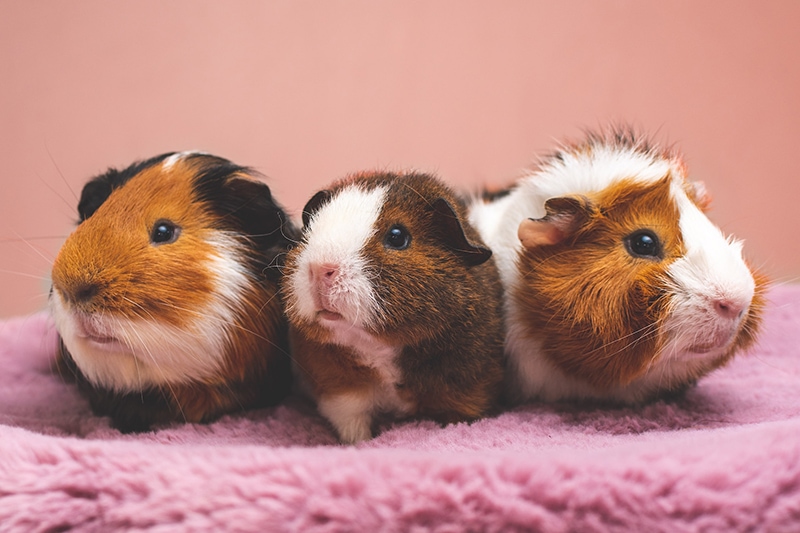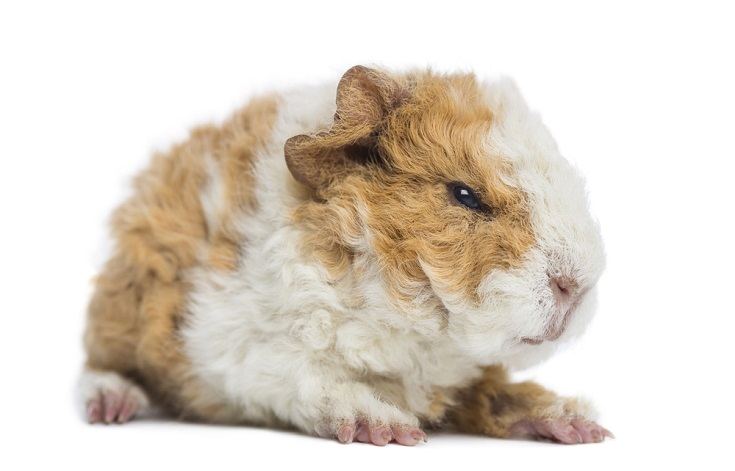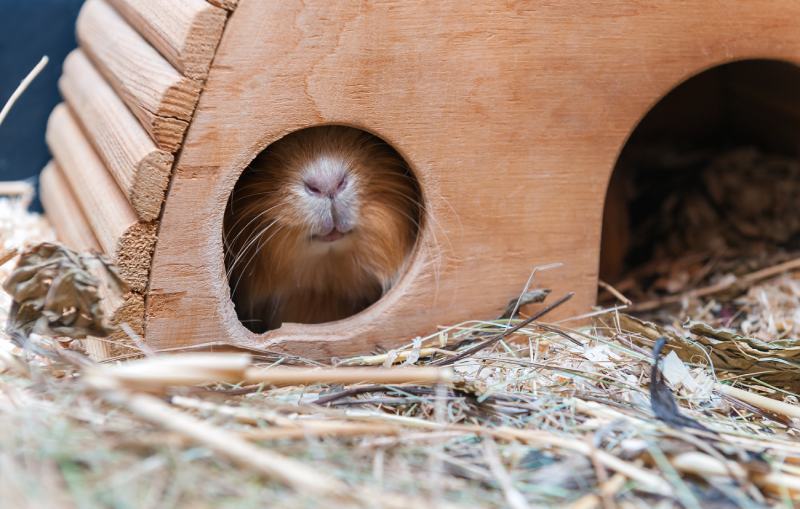Where Do Guinea Pigs Come From? Origins, History & Domestication

Updated on

Click to Skip Ahead
Due to their availability, placid personalities, propensity to not bite or scratch when handled, and generally clean habits, guinea pigs are particularly popular pets. They are small, sociable, and “chatty” creatures, traditionally considered great first pets for children.
Their name provokes some questions, however. If they are not from Guinea and aren’t pigs, then where are they from? They originate from South America’s grasslands and lower Andes mountain ranges, but the interesting stories behind their name and history are revealed below.
Where Do Guinea Pigs Come From?
Guinea pigs originated from South America. They lived in rocky areas, woodland borders, and flat, grassy areas in their native habitat. They go for shelter in places that are inherently safe or in animal burrows that have been abandoned. Given their social nature, guinea pigs typically live in herds of 10 to 15 other animals.
Guinea pigs were raised by the Incas and other people who lived along the Andes Mountains, from northwest Venezuela to central Chile. Guinea pigs played a significant role in Peruvian society. They were raised for food by many families and were usually traded as gifts for newlywed partners starting their new lives together and were given breeding pairs to start breeding colonies of their own. They were also given as gifts to special visitors and kids.
In the 16th century, guinea pigs were introduced to Europe, where they were quickly domesticated and became popular among wealthy residents.

How Were Guinea Pigs Domesticated?
There isn’t a population of guinea pigs that naturally live in the wild today. Guinea pigs are thought to have been domesticated in Peru more than 3,000 years ago. They remained a sustainable food source for the indigenous people who either kept them in their homes or left them to roam outdoors, where they could scratch around for food.
There is much evidence that the indigenous populations of the modern-day Andes, Bolivia, Ecuador, and Peru began domesticating these wild guinea pigs rather than hunting them down and killing them for food. Guinea pigs were brought to Europe by Dutch explorers in the 16th century, and since the 1800s, people have kept them as pets. Additionally, they are utilized extensively for research in the fields of pathology, toxicity, nutrition, anatomy, and genetics.
What is the Origin of a Guinea Pigs Name?
The source of the name “guinea pig” is still a mystery. These sweet little pets are neither pigs nor natives of Guinea! There are many theories about where the term “guinea pigs” originated, each of which is somewhat unique.
The first word of the name may have been inspired by the animals’ price in England in the 16th and 17th centuries, which was one Guinea, or the fact that the animals were transported to various markets in Europe after being loaded into ships in Guinean ports.
The location where some guinea pigs were collected was Guiana, which was often mispronounced and could also be the source of the name.
Boats from the transatlantic slave trade that sailed into ports in West Africa that carried guinea pigs were known as the Guinea men. This could be another possible explanation from history. The second component of the name was also first used by Europeans, who thought the animal’s squeaking noise and the flavor of its cooked meat were similar to the taste of pork. Another factor may be that these little pets have a large head, short neck and legs, and a round, lengthy torso.
The sweet little cavies may also have an identity crisis in other languages. In Germany, they have been called meerschweinchen, which translates to little sea pigs. In Portugal, they are called porchitas da India, which means little pigs from India, and in France, they are lapins de Barbarie, which translates to Barbary rabbits.
Even the species name, C. porcellus, which means “little pig” in Latin, associates the domesticated rodents with pigs.

How Were Guinea Pigs Used in Religion and Medicine?
Guinea pigs were extremely important in Peru’s medical care and religious practices. It was believed that guinea pigs could identify the underlying cause of an ailment. Usually, they were rubbed against a sick relative. Unfortunately, the guinea pig involved wasn’t very lucky because it was later executed and had a local medicine man examine its intestines. The black guinea pigs were said to be the best at identifying diseases.
They played a symbolic role in Chacra Conacuy, the eighth month of the Incan calendar, which is often around July. According to the Indigenous historian Guaman Poma de Ayala, 100 llamas and 1,000 white guinea pigs were sacrificed by the Incas in the Plaza of Cuzco. Native American healers also utilized guinea pigs to cure earaches and nerve pain.
Guinea pigs as “Guinea Pigs”
Guinea pigs have been used in laboratories since the 1800s to research nutrition, genetics, toxicity, and pathology. They have contributed a great deal to medical research, as well as to the health and welfare of people and animals throughout the world.
In 1882, German researcher Robert Koch used guinea pigs to determine that the bacteria Mycobacterium tuberculosis was the cause of tuberculosis. The guinea pig has become crucial in the study of infectious diseases due to its susceptibility to this and other infections and the parallels between its immune system and people.
Guinea pigs were used in the discovery of vitamin C in 1907, and they have subsequently been used in its study because they, like humans, need this vitamin in their diet.
Guinea pigs are frequently used to donate organs and tissues for scientific study. Components of their blood, their lungs, and intestines are used in research to create new medicines. This research led to the discovery and early development of beta blockers to treat high blood pressure and drugs to cure stomach ulcers.
- Allergies and other respiratory conditions
- Nutritional analysis
- Testing for hearing safety

Keeping a Guinea Pig as a Pet
Here are some care tips and facts about guinea pigs to help you decide if it is the right pet for you.
- Guinea pigs typically live for 5 to 6 years, though some may live even longer.
- Guinea pigs only sleep for short periods and are active for up to 20 hours a day.
- Guinea pigs are highly sociable. They get lonely, so they shouldn’t be kept alone.
- They need a secure space big enough to exercise and high enough to stand on their back legs.
- They should feel safe where they can rest and feel protected from predators.
- Their housing will need to be cleaned often.
- The majority of your guinea pigs’ diet should consist of high-quality hay, and they should always have access to it. They should also get access to new grass as often as possible, ideally daily.
- Make sure they always have access to clean, fresh drinking water, and check it twice daily.
- If you detect any changes in your guinea pigs’ feeding, drinking, or toileting routines, consult your veterinarian.
Conclusion
Guinea pigs originated from South America. They were raised for food and given as gifts; in some cultures, they were believed to be able to identify illness. Their name seems nonsensical because they are not from Guinea, and they are not pigs. However, there are a few interesting and unique theories that are still debatable. Guinea pigs have also been used in laboratories since the 1600s and still are today for various scientific studies.
See also:
- Do Guinea Pigs Go Into Heat? Vet-Reviewed Reproductive Facts & FAQ
- When Is Adopt a Rescued Guinea Pig Month? What it Is & How it’s Celebrated
Featured Image Credit: Teofil Mocan, Shutterstock











